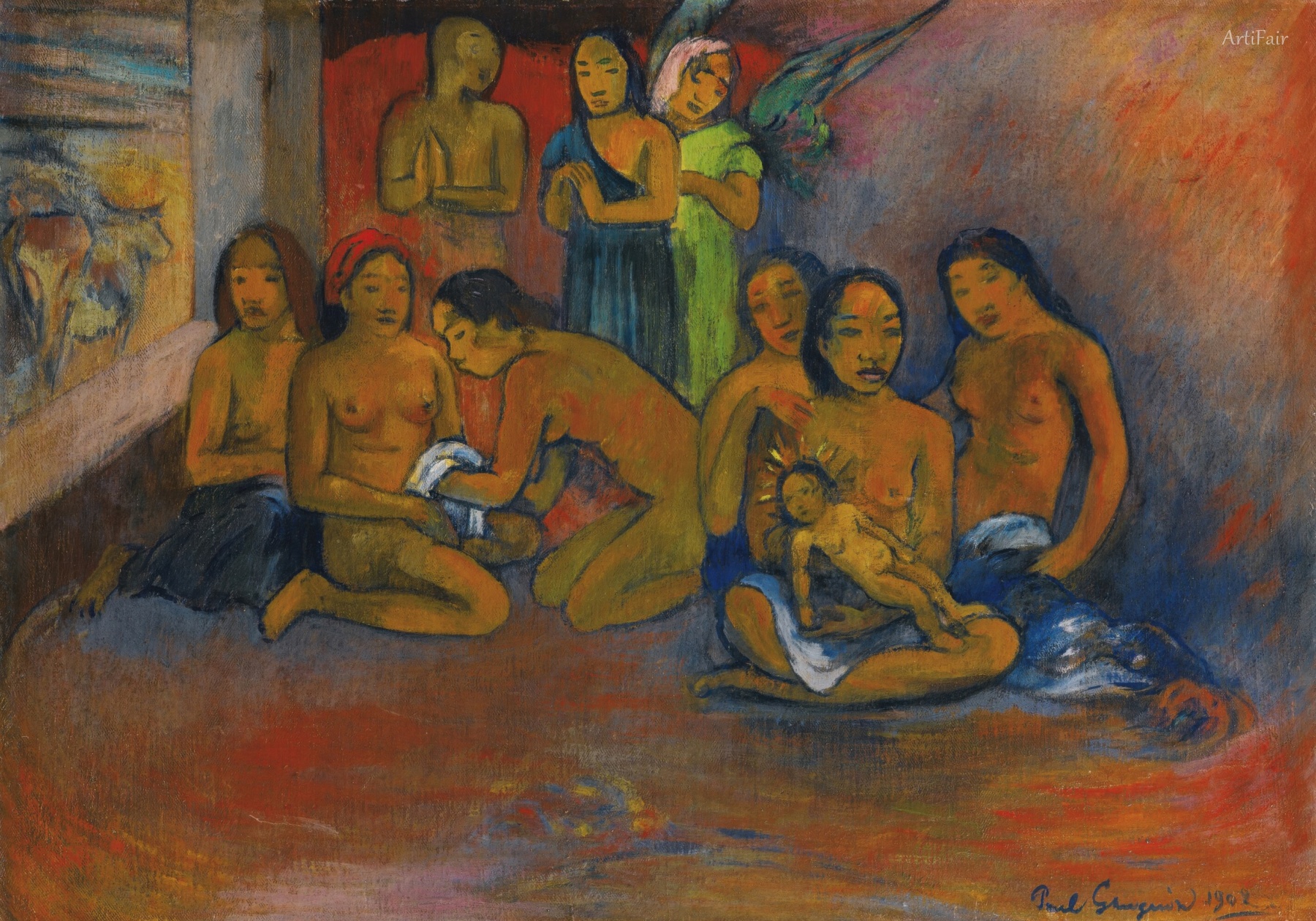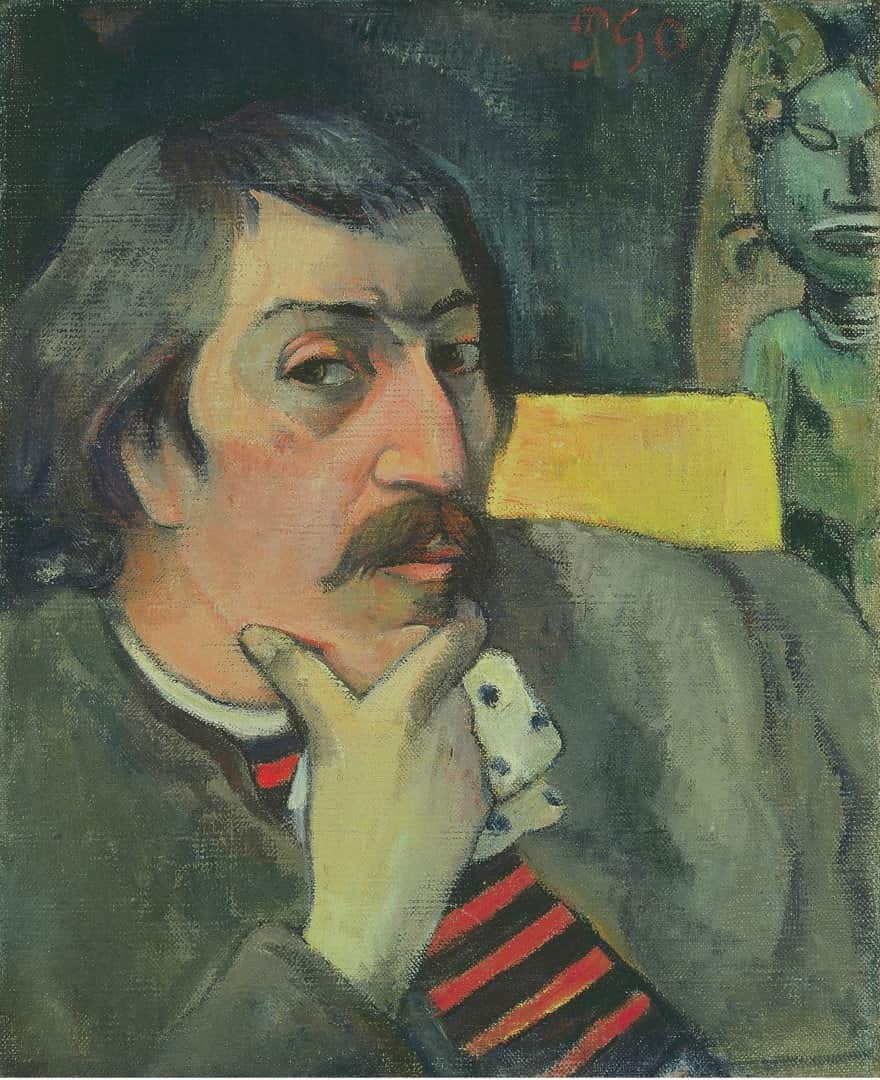

Paul Gauguin
FR
326
Artworks
1848 - 1903
Lifespan
Artist Biography
Paul Gauguin was a towering figure of Post-Impressionism, whose life and art were defined by a relentless search for the spiritual and the “primitive.” Born in Paris, his early life was marked by upheaval; his family moved to Peru following the 1848 coup d'état, an experience that instilled in him a lifelong fascination with exotic cultures. After serving in the merchant marine and French Navy, he settled into a comfortable life as a stockbroker in Paris, marrying Mette-Sophie Gad and starting a family. His interest in art, kindled by his guardian Gustave Arosa's collection, grew from a hobby into a passion. He began painting with the Impressionists, mentored by Camille Pissarro, and even exhibited with them in the early 1880s.
The stock market crash of 1882 shattered his bourgeois existence and catalyzed his full commitment to art. This decision led to financial ruin and the painful separation from his wife and five children. Unable to support them, he embarked on a nomadic existence, driven by a desire to escape European civilization, which he saw as artificial and corrupt. This quest first led him to Brittany, specifically the artist colony of Pont-Aven. Here, he broke decisively from the observational style of Impressionism, which he felt lacked symbolic depth and emotional power.
In Brittany, Gauguin developed his groundbreaking style known as Synthetism. Alongside artists like Émile Bernard, he pioneered a new visual language characterized by flattened planes of bold, non-naturalistic color, strong outlines, and simplified forms, inspired by folk art and Japanese prints. His aim was to synthesize form and color with the emotional or spiritual idea behind the subject, rather than merely depicting its external appearance. The seminal work from this period, *Vision of the Sermon (Jacob Wrestling with the Angel)* (1888), perfectly encapsulates this approach, portraying the inner, spiritual vision of Breton peasant women with a radical new aesthetic.
In late 1888, Gauguin spent nine tumultuous weeks in Arles with Vincent van Gogh. Their intense collaboration, intended to establish a “Studio of the South,” was fraught with artistic and personal conflict. While both artists were creating deeply personal and expressive works, their clashing temperaments and philosophies on art led to heated arguments. The partnership ended dramatically with van Gogh's mental breakdown and self-mutilation. Though brief, the period in Arles was incredibly productive and further solidified Gauguin’s departure from Impressionism, as seen in works like *The Yellow Christ*.
His longing for a pre-industrial paradise ultimately led him to French Polynesia. In 1891, he sailed for Tahiti, seeking to immerse himself in what he imagined was an untouched, authentic culture. Though disillusioned by the extent of French colonization, he created his most iconic works there, drawing on Polynesian life, mythology, and spirituality. His paintings from this period, such as *Spirit of the Dead Watching* (1892) and *Two Tahitian Women* (1899), are renowned for their vibrant, harmonious colors and evocative, symbolic power. After a brief and unsuccessful return to France, he sailed back to the Pacific, eventually settling in the Marquesas Islands.
Gauguin spent his final years in the Marquesas, plagued by illness and poverty, yet continuing to produce profound works, including the monumental allegory *Where Do We Come From? What Are We? Where Are We Going?* (1897). He died in 1903, his genius not fully recognized in his lifetime. Posthumously, his reputation soared. Gauguin's radical use of color and form, his rejection of Western conventions, and his pioneering of Primitivism had a profound impact on 20th-century art, directly influencing movements like Fauvism and Cubism and artists such as Henri Matisse and Pablo Picasso, securing his legacy as a revolutionary force in modern art.